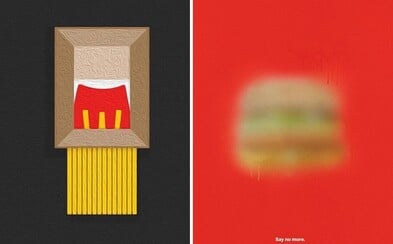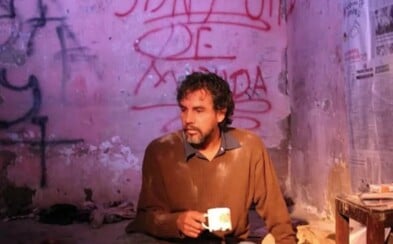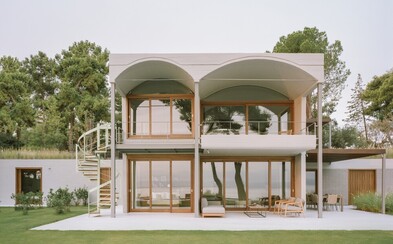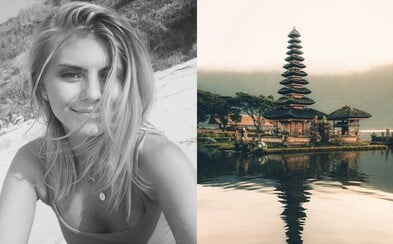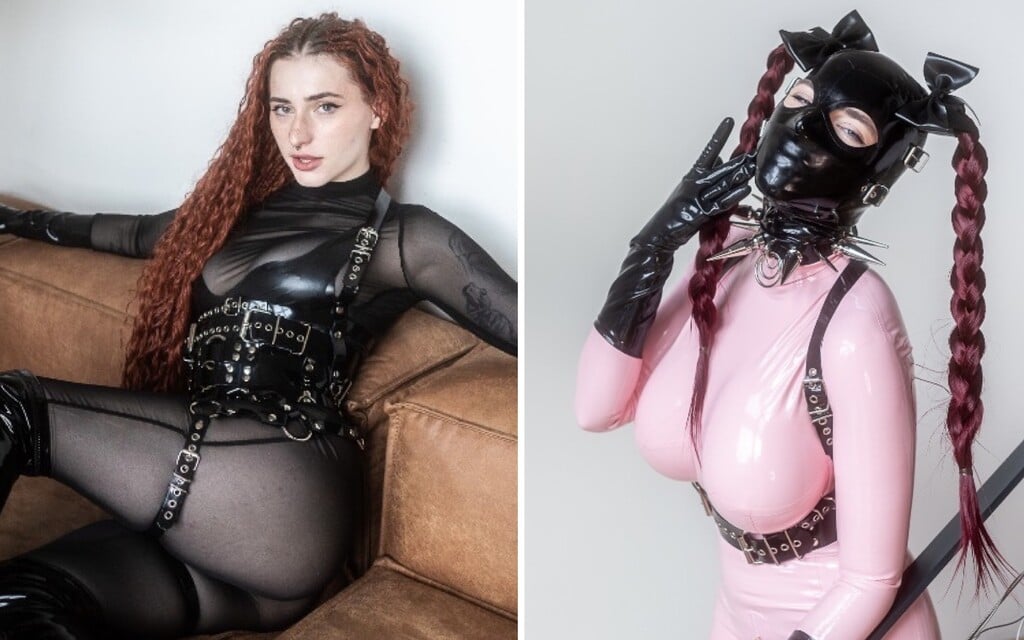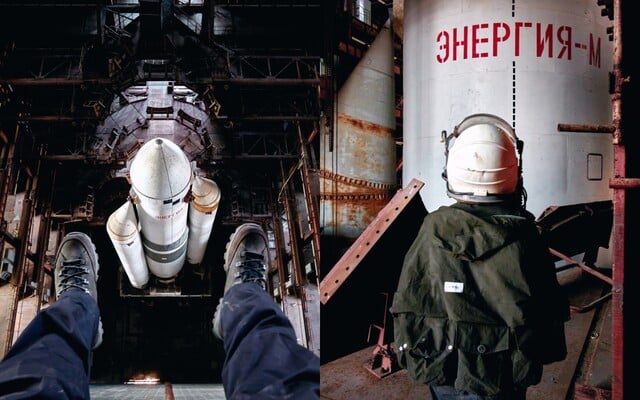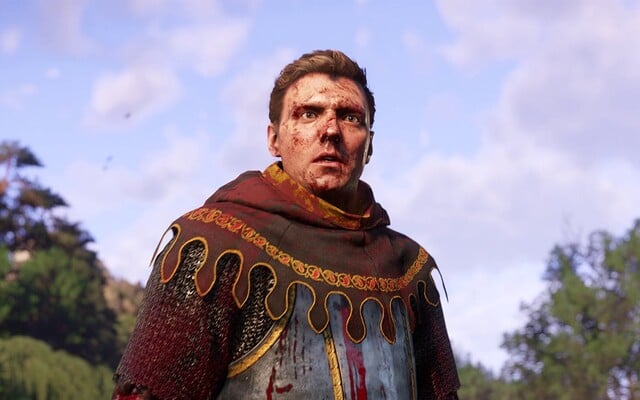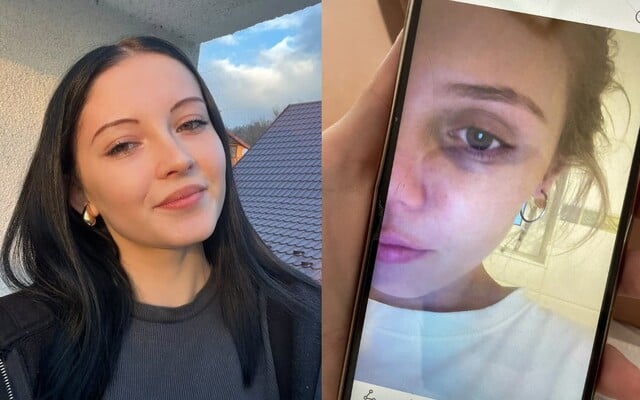 In Denmark, You Can Ski On A 450 Meter Long Roof Of A Waste Incinerator
In Denmark, You Can Ski On A 450 Meter Long Roof Of A Waste Incinerator
In Denmark, You Can Ski On A 450 Meter Long Roof Of A Waste Incinerator
In Denmark, You Can Ski On A 450 Meter Long Roof Of A Waste Incinerator
Leni Riefenstahl: Hitler's Court Filmmaker Who Lent Her Talents To Propaganda
The well-known director became the court filmmaker of the Nazi dictator Adolf Hitler. She was one of the most prominent tools of propaganda of the Third Reich.
If problems persis, please contact administrator.
Leni Riefenstahl went down in the history of world cinema as an innovative and progressive director who was not afraid of novel film procedures and experiments, which subsequently inspired a number of filmmakers around the world. However, Leni Riefenstahl's artistic and directorial qualities were overshadowed by the fact that most of her films served Adolf Hitler's Nazi propaganda.
She started out as a dancer
Leni Riefenstahl, full name Berta Helene Amalie Riefenstahl, was born on April 22, 1902 in Berlin to the family of businessman Alfred Riefenstahl and his wife Bertha. Leni has always shown artistic inclinations, she studied painting at the Berlin Art Academy. During her studies, she also fell in love with dance. While her mother supported her in this interest, her father forbade it. She started going to dance lessons as a sixteen-year-old secretly. In addition, she was also involved in gymnastics, swimming and athletics.
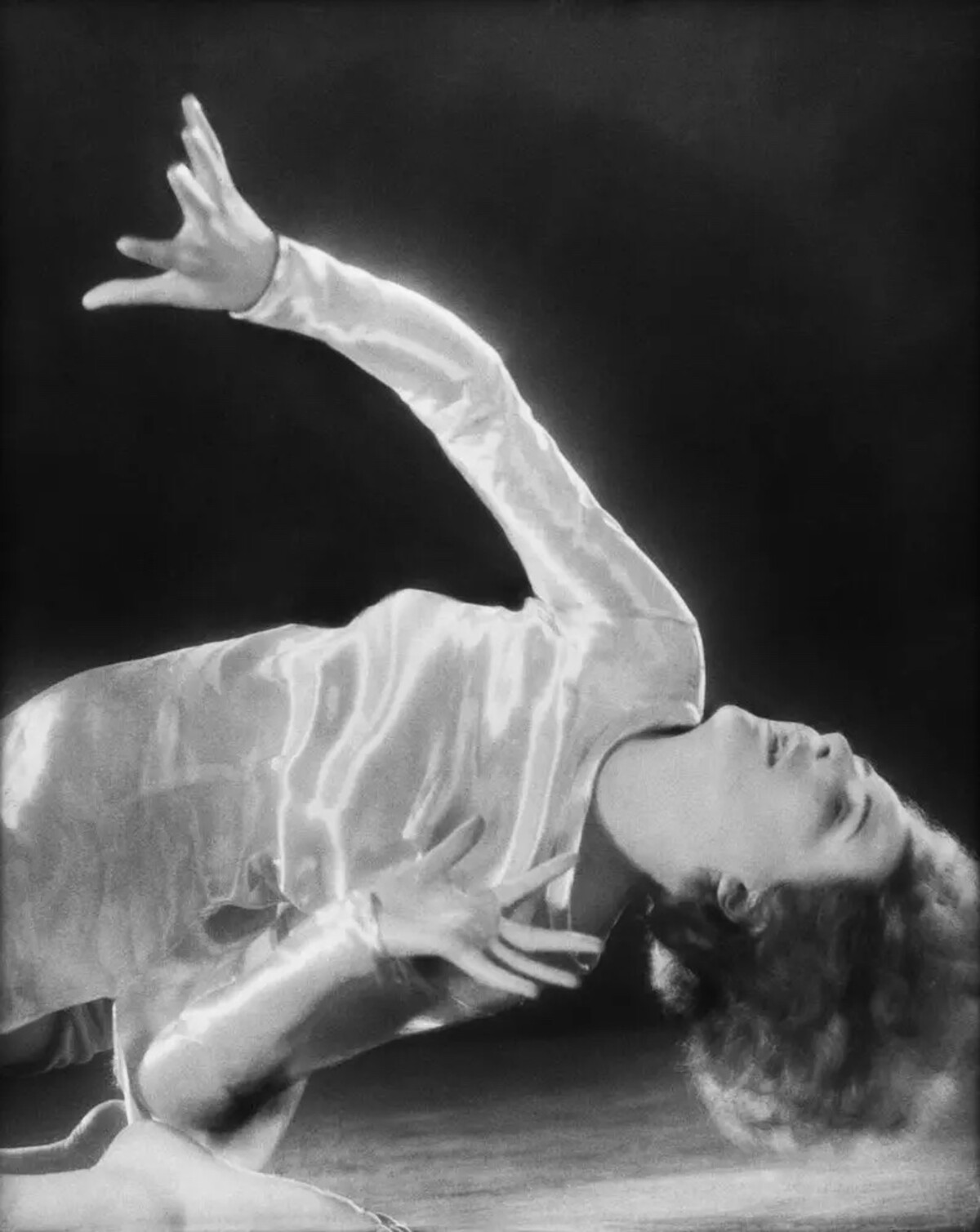
She also started her artistic career as a dancer. In 1923, theater director Max Reinhardt hired her to the famous Deutsches Theater in Berlin. As a successful soloist, she toured not only in Germany, but also in other European countries. She visited, for example, Switzerland or Czechoslovakia. It was while visiting Prague in 1924 that Riefenstahl injured her knee. Because of this injury, she had to end her promising dancing career.
Beginnings as a director and getting to know Hitler
But she flirted with the world of film already during her studies. Later, she became acquainted with the work of the German director Arnold Fanck, which excited her. She learned mountain climbing and skiing for mountain-themed adventure movies. What's more, she acquired the necessary knowledge of directorial, cameraman and editing work during the filming. She decided to break through on the other side of the camera in the film and become a director. She started her own production company.
Her directorial debut was in 1932 with the film Blue Light. She collaborated on the script and took on the main role herself. The mysterious and romantic mountain drama was received very positively by critics, even winning an award at the Venice Film Festival. The film also caught the attention of Adolf Hitler, who was rising to power at the time. Riefenstahl first heard him speak at a public political rally, and later that year she requested a personal meeting. According to the Encyclopedia of the Holocaust, she was charmed by his rhetorical skills and ability to hypnotize an audience. Hitler, in turn, saw in her a promising director who could use aesthetics to create an image of a strong Germany.
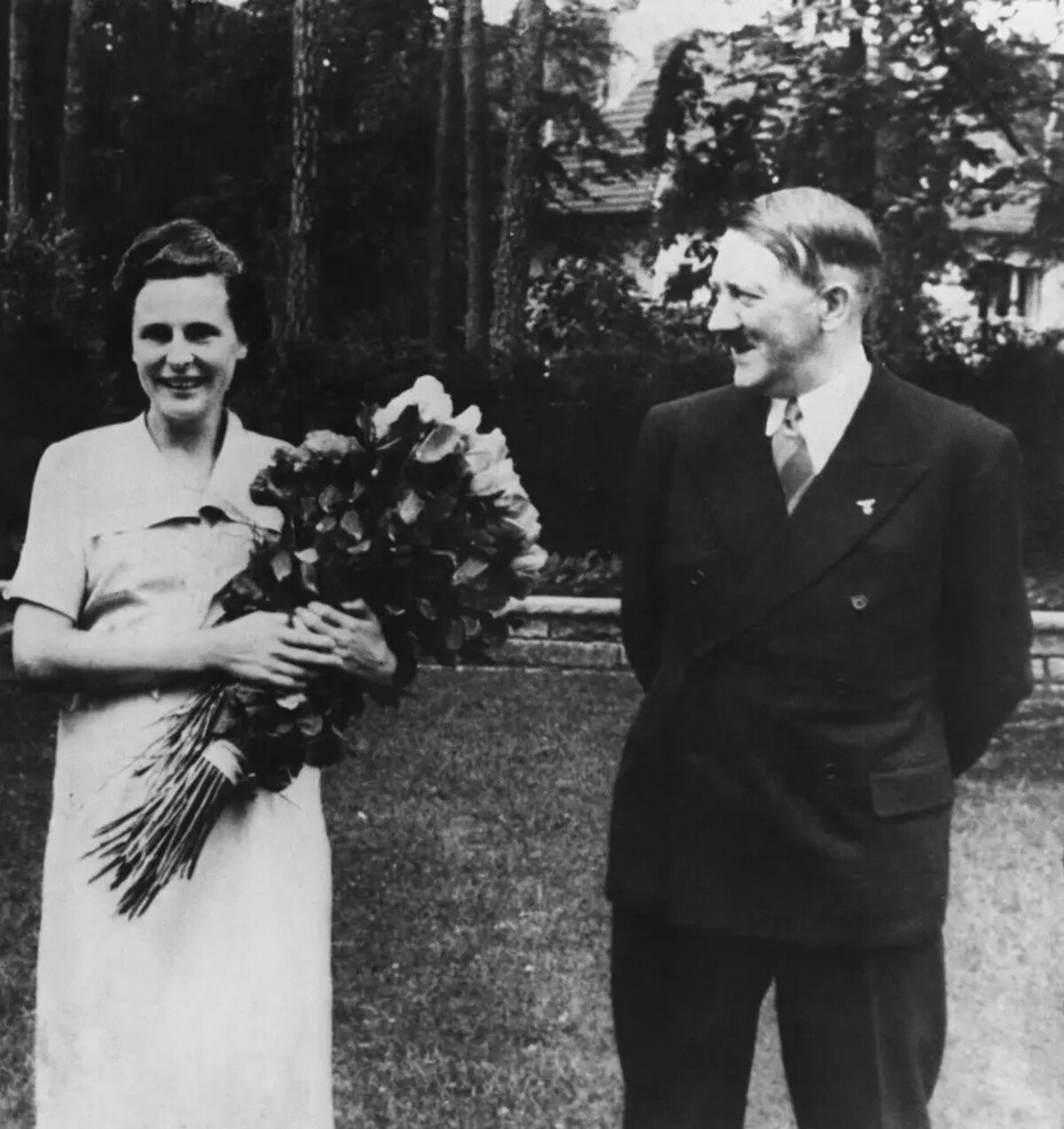
The Nuremberg Trilogy
When the NSDAP led by Hitler came to power in 1933, Hitler asked Leni Riefenstahl to make documentaries about the party congress in Nuremberg. At first Riefenstahl refused on the grounds that she did not want to interfere in political matters. She eventually relented when she got unlimited resources and was convinced by the Nazis that it was a work of art, not political, and that art should not mix with politics.
The first part of the trilogy, Victory of Faith, was filmed by Riefenstahl in 1933, but she did not consider it successful. The second part of the trilogy, entitled Triumph of the Will, which she filmed a year later, was much more successful. It is an official document from the 6th Reich Congress of the NSDAP, which took place in September 1934. Riefenstahl worked on the film with one hundred and twenty people and shot more than sixty hours of material. The young director was not afraid to experiment with unusual camera angles and editing. Thanks to the innovative film technique, Triumph of the Will was considered a masterpiece during its time. At the Venice Film Festival, he won the prize for the best foreign documentary film.
The last part of the so-called Nuremberg Trilogy, Freedom Day - Our Army, was once again considered by experts to be very successful in terms of film craft (especially the use of elements such as blurring or double exposure), but it did not have the same success as its predecessor.
A mixture of aesthetics, sport and propaganda
Another directorial highlight for Riefenstahl in 1936 was XI. Olympic Games in Berlin. Due to its demanding nature, the documentary project saw the light of day only in 1938 and was divided into two parts, knownunder the names Parade of Nations and Celebration of Beauty. It was thanks to Olympia that Riefenstahl made her mark in the history of world cinema in probably the most distinctive way. Again, this was due to the original processing and innovative procedures she used during filming.
Riefenstahl used a camera on a cart for filming. She was also one of the first to use an underwater camera. In the athletics stadium, she had shafts dug in which the cameras were placed so that they could film the athletes as best as possible. Riefenstahl also had some cameras placed directly on the athletes' bodies. The work with light and trick shots were also positively evaluated. The mixture of cinematic aesthetics, sport and propaganda was once again appreciated at a number of film festivals, including the Venice one. Later, in 1956, the film was included among the 10 best films in the world.
Her contribution to cinematography was forgotten
At the end of World War II in April 1945, Riefenstahl was captured by the Allies and imprisoned in a POW camp. It went through several denazification processes (the consistent removal of Nazis and the influence of Nazi ideology from the public life of post-war Germany). Although she was declared a sympathizer of Nazism, she was never a member of the Nazi party and received no punishment for her propaganda work.
The punishment for her was apparently that she unsuccessfully tried to return to film prominence. Any artistic qualities of her films after World War II were obscured by the fact that she made them for propaganda purposes. She was no longer perceived as an innovative director, but as a person who was friends with Hitler and helped his propaganda.
Roma from the concentration camp as extras
Riefensthal did not avoid controversies in the following years either, in connection with the film Tiefland,, with which she attempted a comeback in 1954. However, this film had a dark history behind it. Riefenstahl had already worked on it during the Second World War. At that time, the director chose several dozen Roma from concentration camps as extras. The armed guard delivered them directly to the filming. Most of them later perished in the Auschwitz concentration camp.
But later Riefenstahl insisted that most of these extras survived, she was supposed to meet them after the war. She denied having any part in their deaths. She also claimed that she was not aware that they would be sent to a concentration camp. The civil dispute in this matter lasted until 2002. Although Riefenstahl did not make a film for several decades after the Lowland, it was not her last artistic effort.
She finished her last film at the age of one hundred
In the sixties, she switched to photography. And she was extremely successful. She went to Africa to document the life of the natives in the Nubian region, living among them for several years. Her photo reports were published by a number of important magazines not only in Germany, but also in other countries. For example, they got into the French Paris Match or the American Newsweek. She received a gold medal from the Art Directors Club Deutschland for the best photographic performance in 1975. She exhibited her photographs all over the world.
When she was seventy years old, she started diving. Thanks to this, she was able to return to her beloved filmmaking. In addition to publishing underwater photographs, the film documentary Impressionen unter Wasser was created. It was completed in 2002, when Riefenstahl was one hundred years old.
In the 1980s, she published a memoir in which she again denied any complicity in the malice of the Nazi regime. She stated that her motivation for making films was purely artistic. She also pointed to her youthful naivety.
Leni Riefenstahl died on September 8, 2003, at the age of 101. She made her mark on the world of film as an innovative director who gave cinematography groundbreaking film techniques and, from a professional point of view, shot excellent documentaries. But she never got rid of the label of Hitler's director who helped Nazi propaganda.
If problems persis, please contact administrator.



